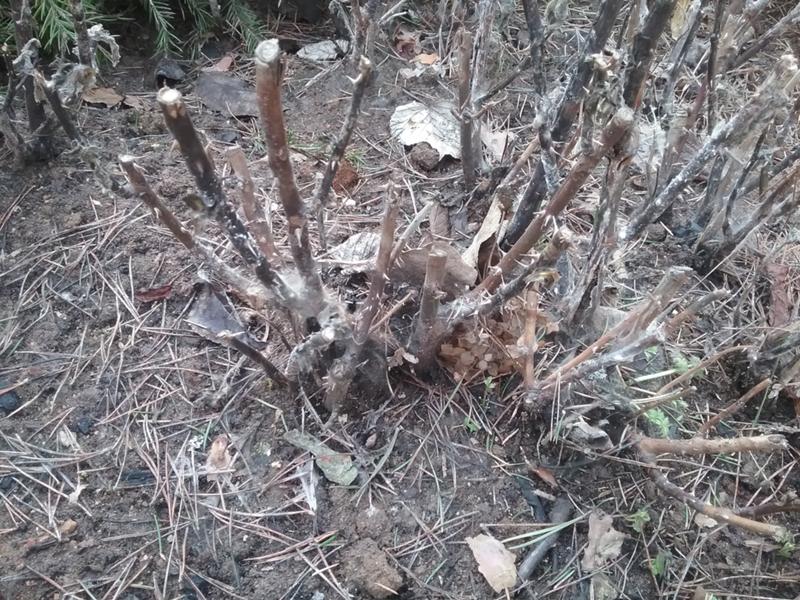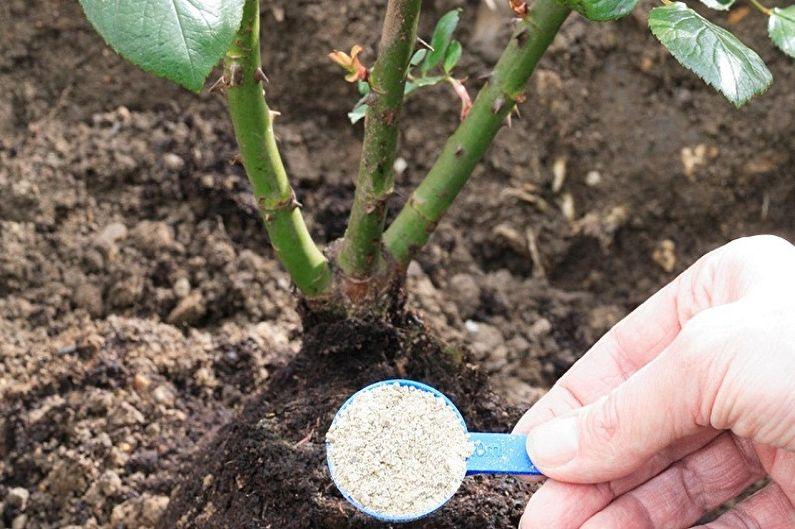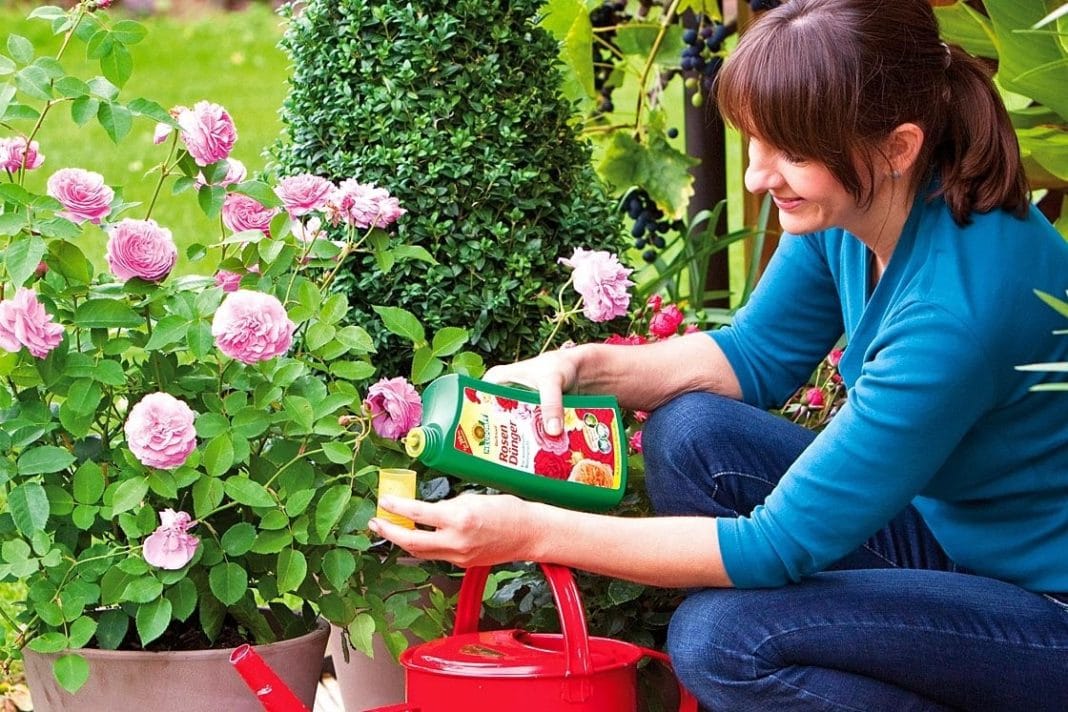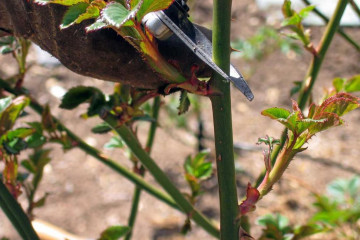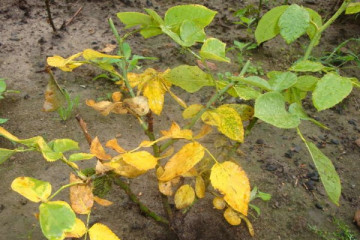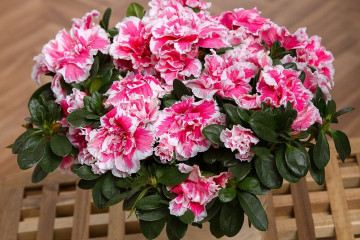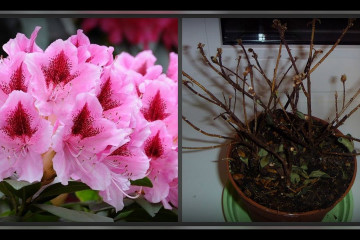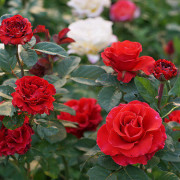How to revive roses after winter - what to do
Content:
At least once, most flower growers, whose plots are decorated with rose bushes, had to deal with losses after the winter cold. Often, after removing the shelter, it becomes clear that the shoots have turned black, covered with mold. In other cases, the buds swell on the bushes, and after a few weeks the branches dry out. Gardeners are wondering if the rose did not wake up after winter, what to do and whether it can be saved.
How to save roses after an unsuccessful winter
If the rose did not wake up after winter, a number of measures should be taken immediately:
- Collect all the old leaves from the bushes and the ground. Inspect the bush and remove dried, broken, frost-damaged stems with a secateurs.
- Cut the blackened shoots to healthy wood. Cut completely damaged plants with an intact graft to the grafting site on the trunk - there is a possibility that dormant buds will wake up and young shoots will appear.
- Smear places of cuts with brilliant green, and then with garden varnish or special paste.
- Spill the soil and spray the roses with a fungicide such as Bordeaux mixture or Fundazol.
- Shade or cover the plants. Large-volume cut-off plastic bottles painted white are suitable for these purposes. It turns out a small greenhouse in which comfortable conditions are created for the restoration of the rose.
- Mulch the soil around the bush.
- Throughout the entire period of resuscitation, carry out regular moderate watering. The soil should not dry out or be waterlogged.
If these actions are performed in spring in time, then the problem of how to reanimate roses after winter will quickly disappear.
How to revive a rose with blackened stems
Finding out why roses turned black in spring and do not wake up, one should not get rid of them, but revive them. Varietal specimens are able to wake up even if they are completely devoid of shoots. If the roots remain viable, young shoots can grow from them and the rose will gradually grow the aerial part.
If small blackened areas are visible on the shoots, then they should be cut along healthy tissue so that the cut point is 5 mm above the bud. It should be even, with a slight slope, without chipping and torn edges.
Shoots that are completely blackened must be removed. They are pruned to the site of inoculation so that there is no hemp left. All stems below the grafting must also be cut off. Otherwise, the flowers will not retain varietal characteristics.
Gardeners often ask themselves: if roses disappear in the garden, what to do and how to determine if the blackened bushes are alive. You should trim and monitor their condition. If the roots survive and the buds remain, then after a while young shoots will appear, and then a full-fledged crown will form. Roses are considered a fairly hardy culture, they are able to survive even radical pruning, recover and give flowering.
Reasons why a rose turns black after wintering
The reasons for deciding how to reanimate rose bushes with blackened shoots often lie in the wrong organization of care. If it is wrong to prepare plants for wintering in the fall, they can darken and die.
If, on the eve of cold weather, the bushes were covered with special material, then with the onset of spring it is important to remove it in a timely manner. This can be done only after the threat of frost has passed.
Marsonina
This is one of the most harmful diseases of indoor and garden crops, which does not respond to treatment for a long time. Its other name is black spot. It is provoked by the fungus Marssonina rosae and manifests itself on leaf plates and shoots. They acquire first purplish-white spots and then black. The foliage becomes gray-brown and falls off. Weak plants wither away from marsonina and hardly bloom, do not tolerate wintering well.
It is difficult to avoid the appearance of fungus on roses, and it is not difficult to strengthen the immunity of plants. This helps them to resist the causative agent of the disease. It lives in alkaline soil, old fallen leaves, and is brought by wind and precipitation.
Factors that contribute to the spread of the fungus and must be eliminated are:
- high humidity;
- damp and warm weather;
- a sharp change in humidity and drought;
- excessive watering;
- lack of lighting.
Powdery mildew
Powdery mildew is a fungal disease. Spores of the pathogen Sphaeroteca pannosa have been living in the soil for decades and are activated under favorable conditions:
- high humidity;
- heat;
- excess nitrogenous substances in the soil.
Roses are often infested with powdery mildew when the branches thicken. Young shoots and petioles are the first to suffer. They are covered with a white coating. When the spores mature, drops of fluid are released and ulcers develop. The leaves turn yellow, the buds become smaller and stop blooming.
Factors that provoke a fungal infection:
- rainy weather;
- high humidity;
- sharp temperature drops;
- excess nitrogen content in the soil;
- deficiency of minerals.
Infectious burn
Caused by spores of fungi, often develops with the onset of spring after the roses are freed from shelters. It occurs mainly due to dampness, which is installed under the covering materials, especially at freezing temperatures.
What to do if the rose did not wake up
Gardeners often do not know what to do if roses do not wake up after winter. During this period, the roots and buds of the plant suffer from lack of air, they can rebuke. The bushes move to the stage of active growth, but may die due to a stop in the development of the root system. It is this reason that begs the question of how the rose root can be revived.
Why is this happening, how to wake up
Grafted roses can hardly revive after a dormant period. In March, buds begin to swell on them. The bushes are getting ready to grow. But they do not have enough sun, lighting. In addition, the root system freezes in the soil. For this reason, plants need to be awakened. To do this, you should:
- Organize ventilation by digging out the shelter and removing the plastic wrap from opposite sides.
- Pierce the material with a knife so that air penetrates under the shelter from above.
- When the air temperature reaches +8 degrees, the roses must be completely released.
- Protect from direct sunlight.
- Drizzle with warm water.
- Loosen the soil.
- Before bud break, spray the plants with a 3% solution of ferrous sulfate. If the buds are full, use a 1% solution of copper sulfate.
Fertilizing roses
If the culture looks lifeless after the cold season, it can be restored. You need to know how to feed the roses if they do not leave after winter. Bushes can give new shoots from the grafting site or the root collar.To do this, you need to feed.
What can you feed
To awaken the culture, you can use:
- Any root former, for example, "Kornevin". The solution is applied at the root.
- Antidepressant HB-101. Revives surviving shoots.
- Nitrofosku in a dosage of 60 g. It is added to the soil and to its surface.
- Nitrogen fertilizers (nitrate, urea). Introduced in June to build up green mass.
- Complex mineral compositions. Used after the buds appear.
When gardeners are wondering what is happening, if there are no shoots and the rose dies, then the reason most often lies in the inattention to the plants during the period of liberation from shelters, improper care. You can try to revive the plants with the advice of experienced florists.
